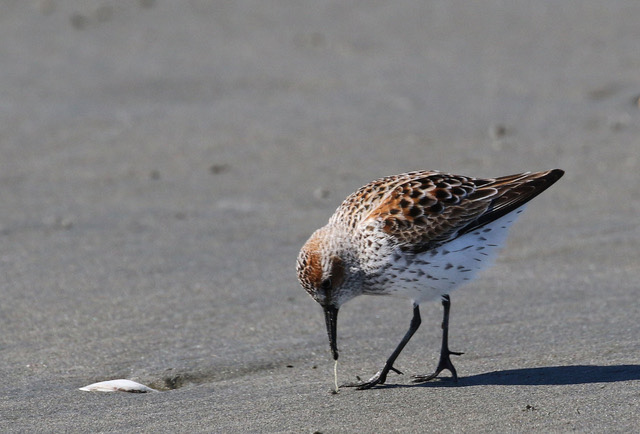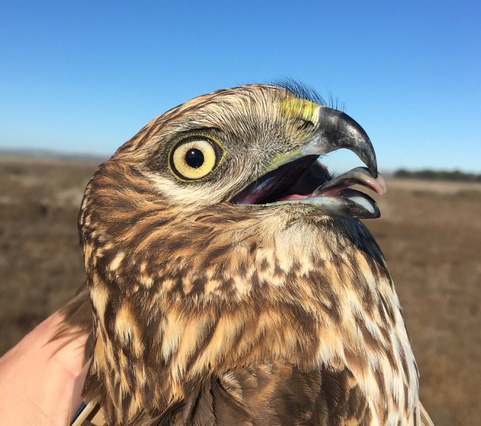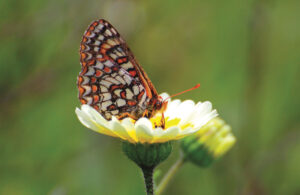Like me, you may have seen recent headlines sounding the alarm that birds are vanishing from North America. From the abstract of the September 2019 report in the journal Science, an “integration of range-wide population trajectories and size estimates indicates a net loss approaching 3 billion birds, or 29 percent of 1970 abundance.”
Whether you are a bird lover (like me) or not, this is disheartening news and a wake-up call, if you haven’t already been awakened. In addition to digesting the meaning of such a great loss, the question it presents to me and others I have spoken with about it is, what can I do to help? We are given a lot of bad news these days about the environment and our climate, and not too much about how to hold it all and continue on.
I think of the lines from the Lorax, “Unless someone like you cares a whole awful lot, nothing is going to get better. It’s not.” And I believe care does matter and each of us acting from that place, with the gifts we have to offer, can and does make a difference
The United States North American Bird Conservation Initiative has been releasing a “State of the Birds” report since 2008. While the report attests to an urgent need for conservation action, it also shows how waterfowl have benefited from harvest management and wetland conservation actions. In other words, human actions have had a positive impact on birds. We can think back to the recovery of brown pelicans and bald eagles, among other birds positively impacted by the banning of the pesticide DDT. Where wind turbines, cell towers and solar farms are concerned, the U.S. Fish and Wildlife Service has recommended best practices for siting, design, and construction to minimize the impacts to migrating birds. Domestic cats account for significant bird loss, so for those who have one, you can strive to keep yours from eating birds and other wildlife. Thanks to science, monitoring, wise action and human care, when it comes to bird loss we know conservation does work, and our efforts can make a difference.
We can contribute, too, by caring about the birds around us. The Bay Area is filled with “important bird areas” and thankfully still, an abundance of birds. As summer turns into fall, let’s welcome them home! May your observations give rise to more understanding about and care for birds. And if you haven’t already, may you fall in love with them and be inspired to help turn this trend around.
Migration Happens
Perhaps you can relate to having an overwhelming urge to split town for a few months? For our migrating feathered friends, they simply must go.
How spectacular to consider the movements of billions of birds driven to fly vast distances in search of abundant food and remote nesting habitat, invisible to most people. Can you even imagine weighing (on average) about an ounce yet flying over 2,200 miles? Why do they do that and where do they go? Here you can learn where four different types of birds travel, along with when and where you can welcome them back to their winter home.

In Your Back Yard
If you have a song in your heart, or like to whistle, you’ll love the golden-crowned sparrow! As soon as I hear whistling in my backyard, usually around the autumnal equinox, I know the golden-crowned sparrow has returned. And these little brown birds, with their bright yellow crowns, let it out once they find their way back here. “Oh dear me” they sing in three, clear, descending notes. I’d be whistling the same song too after the journey they make! It’s a long haul, even if they are considered only a “medium-distance” migrant. These little birds fly all the way to the tundra and scrublands of British Columbia or Alaska from my back yard, and back, in a matter of months. Estimated at a population of 4 million by Partners in Flight, the golden-crowned sparrow is thankfully still considered common and widespread.

Out at Point Blue’s Palomarin Field station, the field biologists band around 3,000 birds a year, 50 of them golden-crowns, and celebrate the sparrows’ return with a party where everyone must bring their own yellow cap and golden food! Maybe you’ll want to celebrate the return of the sparrow this year too and throw your own party? If you live in the North Bay, Point Blue is a great local resource for everything bird — download a variety of bird Pocket guides or consider joining their Rich Stallcup Birdathon which goes on from Sep. 15-Oct 15. Or, if you are more South Bay oriented, you can check out San Francisco Bay Bird Observatory for everything related to the conservation of birds and their habitats. In the Central Bay you’ll find Golden Gate Audubon to be an excellent resource.

Dive In
Maybe you are a water person, and if so, waterfowl might be the birds for you. They are easy to identify, especially when they raft on top of the water in groups like many do, including the Surf Scoter. What a great name, but one of the more peculiar looking sea ducks (if you ask me). They are also called “skunk-heads” by hunters because of the male’s black and white head. He has a notable bill too that looks like it was taken from a puffin’s head and got mutilated in the process.
Surf scoters fly way up into the boreal forest starting in mid-March, working their way along the coasts and overland, at night. Pairs hook up here and they breed for the first time at 2-3 years of age, so if you see some hanging around in summer they are probably just young. Scoters like shallow lakes and muskeg bogs with rocky edges to breed in. After they nest, they fly to sheltered waters to molt and then become flightless before continuing back to their winter range. The ones that return here arrive in early November and frequent coastal areas to feed on Pacific herring roe, mussels and clams.
Sadly, surf scoters have been in rapid decline over the last few decades, from 30,000 in the 1980s, to less than 3,000 over the past five years. Last year, however, their numbers skyrocketed to more than 14,000. Whether that’s a blip or a trend remains to be seen.
Scoters like to congregate over eelgrass beds, so they can be easy to spot if they are here. To see some for yourself always carry binoculars with you when you travel around the Bay. If you are on the ferry from Vallejo to San Francisco between November and December keep your eyes open as you pass Point Pinole and go under the Richmond/San Rafael Bridge. Or in the winter, try San Leandro Marina below the Oakland airport, Strawberry Point in Richardson Bay looking south toward San Francisco, or the deep water areas alongside the Richmond, San Mateo and the Dumbarton Bridges.
If you want to get better at being a waterfowl identifier, Cornell Lab of Ornithology offers an online course, or to learn more about where these birds summer, check out Ducks Unlimited new video.

At the Water’s Edge
If you prefer walking along the edges of the beach to jumping in the water, you might feel more at home with our shorebirds. One of those to be on the lookout for in the coastal regions is the abundant Western Sandpiper. Bigger than a sparrow, but smaller than a robin, they are chunky and have a black bill that droops at the tip and black legs that keep them running along the waters’ edge to feast on crustaceans, bivalves and little worms. They also seem to graze on biofilm in intertidal habitats. As of the 2014 State of the Birds Report, western sandpiper populations appear to be stable.
Migrating shorebirds bolt from the Bay Area sometime in April, yet have a protracted return. On their way north, an estimated 6.5 million western sandpipers pass through the Copper River Delta in Alaska during the course of a few weeks. They breed in coastal sedge dwarf tundra up in the Arctic, then flock again in great numbers to return, stopping in British Columbia’s Fraser River Estuary and Grays Harbor, Washington to rest and refuel between June (if they have an unsuccessful nest) and October (the juveniles). Around the Bay in the winter months you can see the western sandpiper and other shorebirds at the Albany mudflats, San Pablo Bay National Wildlife Refuge and during the ebb tide at many other places where the shore meets the sea.

High in the Sky
For those who appreciate aerial maneuvering, raptors are the bird for you! They move through the Bay Area in the fall, among them Northern Harriers. Known for their “skydancing” courtship displays and owl-like facial discs, these birds are something to behold.
If you see a big hawk with a white rump flying down low, especially in marsh habitat, it is most likely a harrier searching for voles, snakes and other small prey. Like many hawks, some harriers live here year-round, particularly at places like Eden Landing, Don Edwards San Francisco Bay National Wildlife Refuge, San Pablo Bay and Suisun Marsh. Other harriers migrate, leaving the region between February and April to breed across five Western states, including Alaska. One harrier, nicknamed “Blanca,” has been tracked for the past two years by USGS and UC Davis graduate student Shannon Skalos. Both times Blanca traveled to the Arctic Circle, for a 13,000-mile round-trip journey!
Like the surf scoter, these beauties are also facing a decline in California, and are listed as a species of special concern by the California Department of Fish and Wildlife due to a loss of habitat and prey, as well as nest disturbance. Harriers build their nests on the ground and are therefore more vulnerable to predation and, because they prefer habitats in marsh lands, high tides. You can learn more about harriers here, and if you really want to dive into this family of birds, the Golden Gate Raptor Observatory has been training volunteers to track the fall migration of raptors through the Marin Headlands since 1980. GGRO’s next recruitment cycle will begin in May of 2020. They also host a weekly Hawk and Talk Program on weekends through October.





